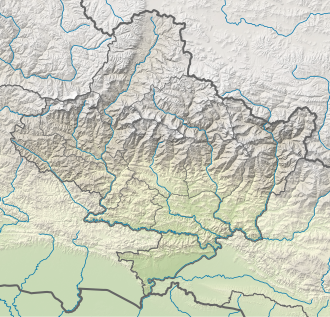| Gangapurna Lake | |
|---|---|
 Gangapurna Lake in 2015 | |
| Location | Manang, Manang District, Nepal |
| Coordinates | 28°39′50″N84°01′03″E / 28.66389°N 84.01750°E |
| Type | Lake |
| Surface area | 21.08 ha (52.1 acres) |
| Location | |
 | |
Gangapurna Lake is a glacial lake in Manang, Gandaki Province, Nepal. [1] [2] It was formed by glaciers from Gangapurna (7,454m), Annapurna IV (7,525m), Khangsar Kang and Glacier Dom. [3] [4]

